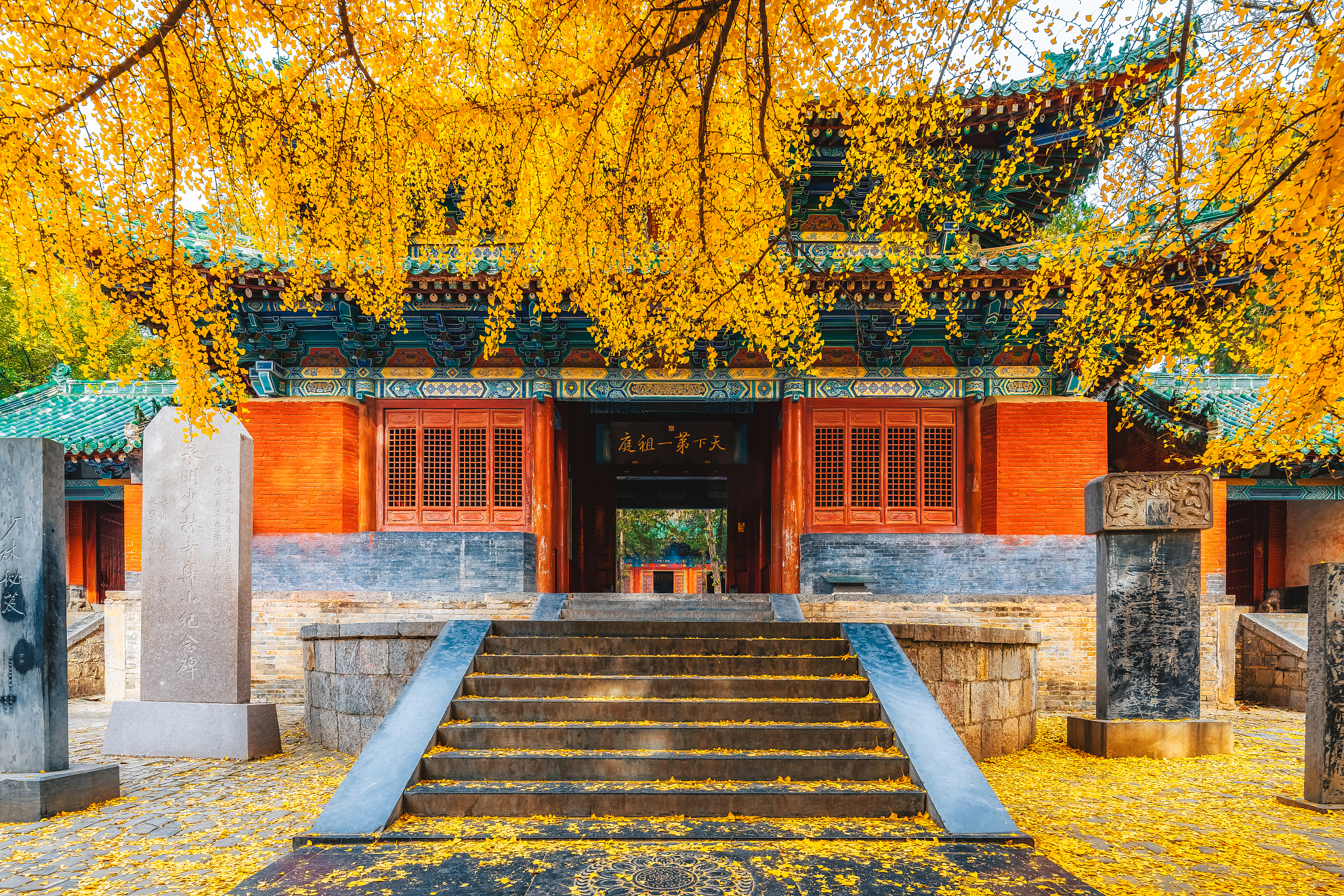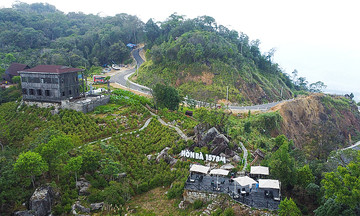Revered by the Chinese people and martial arts enthusiasts worldwide, Shaolin Temple is the birthplace of many kung fu masters and a prominent cultural symbol of China. The temple has also been featured in numerous popular novels by Jin Yong, such as "Demi-Gods and Semi-Devils" and "The Smiling, Proud Wanderer". Prior to the police investigation of Abbot Shi Yongxin, the temple enjoyed widespread admiration.
Located on Mount Songshan, one of China's five sacred mountains, in Dengfeng City, Henan Province, this Buddhist temple was founded in 495 by Emperor Xiaowen of the Northern Wei Dynasty.
Originally a simple structure, the temple expanded over successive dynasties. Many of the current buildings date back to the Ming (1368-1644) and Qing (1644-1912) dynasties.
 |
Shaolin monks performing kung fu at the Pagoda Forest. Photo: Xinhua |
Shaolin monks performing kung fu at the Pagoda Forest. Photo: Xinhua
Key buildings are arranged along a central axis, including the temple gate, the bell and drum tower, the Hall of Heavenly Kings, the Dharma Hall, the Abbot's quarters, and the Sutra Depository. The largest building is the Thousand Buddha Hall, adorned with well-preserved murals. Constructed from wood and stone, the buildings feature red exteriors accented with green.
Near Shaolin Temple lies the Pagoda Forest, housing 246 tombs marked by diverse pagodas, and considered one of China's greatest architectural legacies. This architectural diversity, combined with the temple's significance as the birthplace of Chan Buddhism, has established Shaolin Temple as one of China's most important Buddhist sites. In 2010, UNESCO designated the temple, along with other historical monuments in Dengfeng at the foot of Mount Songshan, as a World Heritage Site.
Fans of Chinese literature and period dramas are familiar with the saying "all martial arts under heaven originated from Shaolin." Shaolin kung fu is described as "light as a cat, swift as a tiger, majestic as a dragon, fast as lightning, and powerful as thunder." The temple is known for various renowned fighting styles, such as Plum Blossom Fist, Five Animals Fist, Long Fist, and Lohan Fist.
Monks performing martial arts at Shaolin Temple, Henan Province. Video: YouTube/New China TV
Given its fame and rich history, Shaolin Temple is a popular tourist destination in China. However, the temple faced controversy under Abbot Shi Yongxin. In 2015, plans to build a 297 million USD hotel complex in Australia, including a temple, a live-in kung fu academy, and a golf course, sparked debate.
Currently, a portion of the temple is open to the public. A popular attraction, especially for Vietnamese tourists, is the Sutra Depository, featured in many of Jin Yong's novels, which houses valuable scriptures and martial arts manuals.
 |
Shaolin Temple in autumn. Photo: Trip.com |
Shaolin Temple in autumn. Photo: Trip.com
The entrance fee is 80 CNY (approximately 300,000 VND). Besides sightseeing, visitors can participate in authentic Shaolin kung fu classes or watch martial arts performances. The ideal time to visit is between March and November, when the weather is favorable. Local travel agencies recommend spending half to a full day exploring the temple.
The temple is open from 7:30 a.m. to 6:00 p.m. (March-November) and 8:00 a.m. to 5:30 p.m. (December-February). Visitors can join a tour or take a bus or taxi from Zhengzhou City (90 km), Luoyang (55 km), and downtown Dengfeng (15 km).
Anh Minh (SCMP, Britannica, China Discovery)












